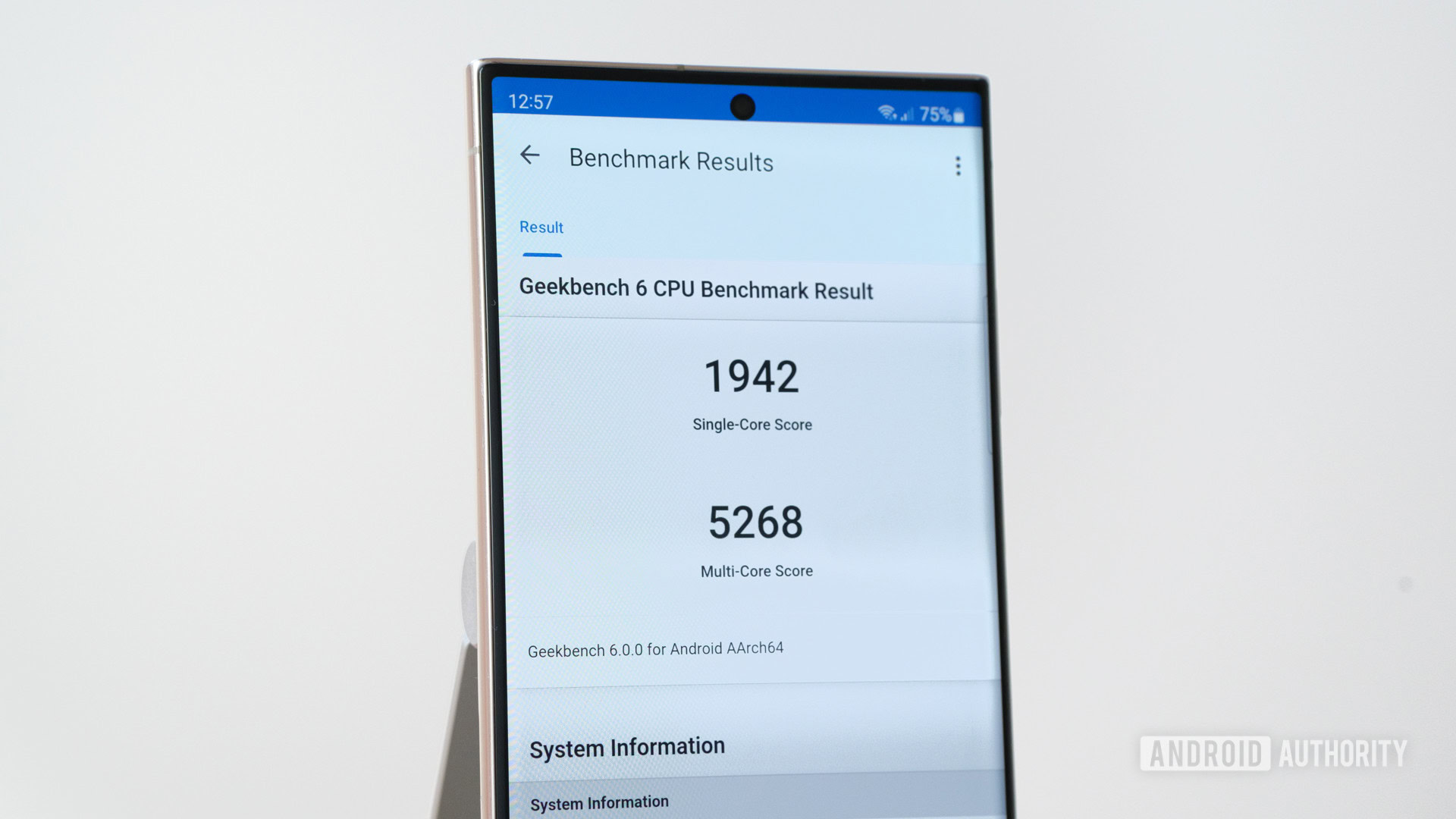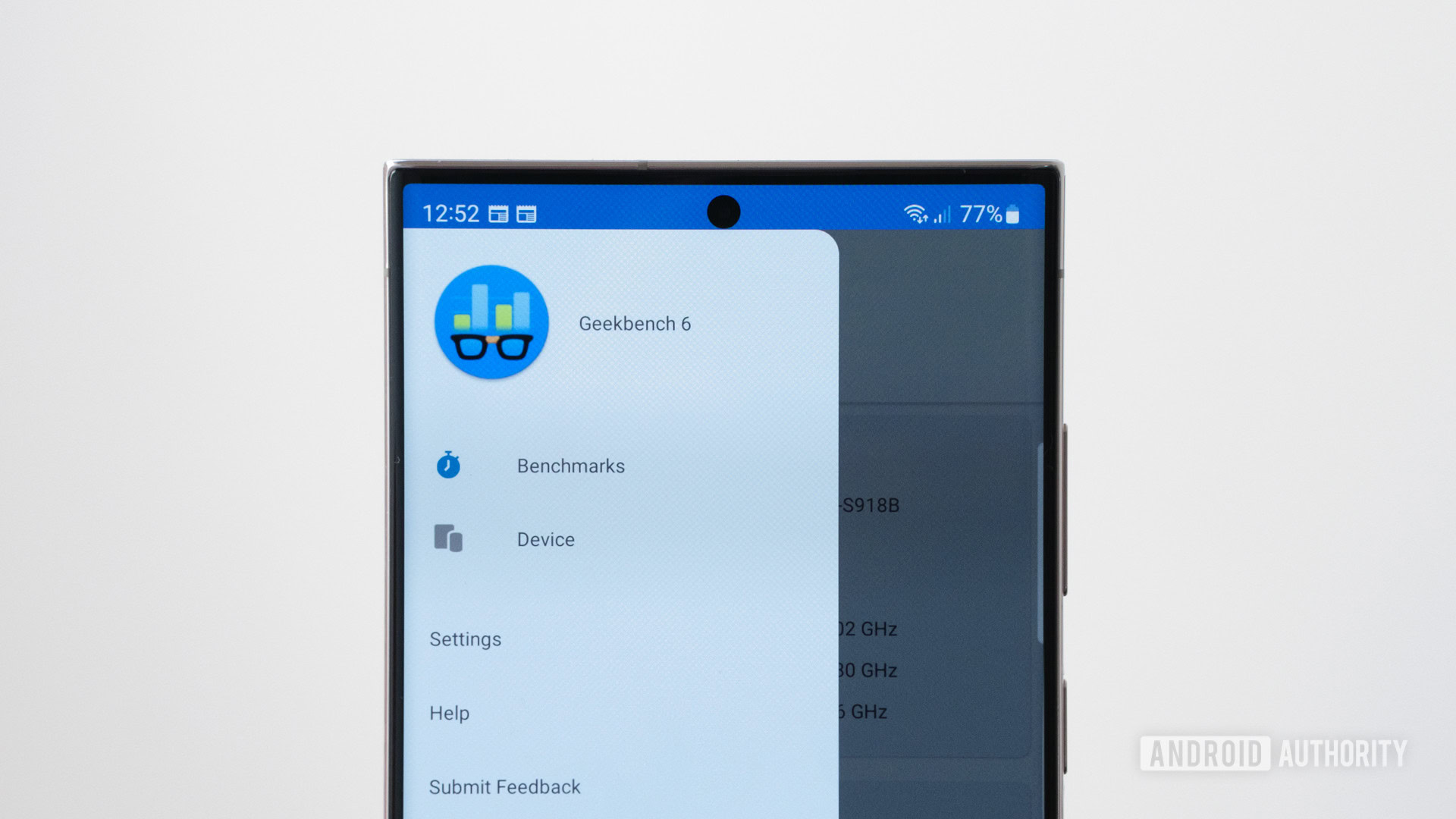Affiliate links on Android Authority may earn us a commission. Learn more.
Geekbench 6 benchmark results: Apple extends its performance lead
February 24, 2023

Geekbench has become a staple of cross-platform benchmarking, and there’s a new version hot off the press. We’ve grabbed the software and a selection of the latest and greatest smartphones to see how they handle this new CPU test. But before we get into the numbers, let’s dive a little bit more into the new benchmark.
What’s new with Geekbench 6?
According to Primate Labs’ John Poole, Geekbench 6 is primarily designed to improve the real-world relevance of its benchmarking suites. It’s built to emulate modern workloads, ranging from video conferencing background blur to machine-learning subject tagging like in Google Photos. That’s required quite a few under-the-hood tweaks to bring the suite up to date.
One of the most noteworthy changes with Geekbench 6 is a new method for testing and scoring multi-core workloads. The old way of assigning tasks to each core has been replaced by a shared workload approach designed to better simulate how modern CPUs handle real-world workloads. After all, processes are seldom perfectly split across all cores equally. Instead, different threads of varying sizes are often scheduled to the most suitable cores.
Geekbench 6 revamps multi-core testing to simulate modern workloads.
This is a significant change, as shared cache resources, scheduler optimizations, and even merged-core designs used by some cores will likely have even more sway over multi-score results, which we’ll see in a moment. RAM performance will also apparently be more influential from this point on. The Geekbench 6 benchmark also revamps single-core workloads, with much larger data sets better able to stress today’s more powerful CPU cores. Likewise, the machine learning (ML) suite features newer, more up-to-date models.
Geekbench 6 benchmark results

Cutting right to the leaderboard, Apple’s A16 Bionic and last-gen A15 Bionic top the Geekbench 6 charts. According to this test, the iPhone 14 and even last year’s iPhone 13 series are the fastest phones available, boasting impressive single-core and multi-core scores that fly past the competition. And just as we thought, Android handsets were closing the gap.
Apple’s big Everest and little Sawtooth custom Arm-based CPU cores are still considerably more powerful than Arm’s Cortex-X3, A715, and A510 combination used by rival Android platforms. The chip’s multi-threaded performance, in particular, powers ahead of the everything else in the mobile space and has seen a big boost from the new multi-core workloads. But more on that in a minute. This shows that core count isn’t everything; Apple uses just two big and four power efficiency cores. Instead, the underlying architecture is much more important, at least when it comes to peak performance. It will be interesting to see how Qualcomm’s custom Nuvia cores stack up once they finally arrive.
The closest competition in the Android space comes from the Qualcomm Snapdragon 8 Gen 2. Specifically, the souped-up chip version in the Samsung Galaxy S23 for single-core clout and the gaming-oriented REDMAGIC 8 Pro for impressive multi-core capabilities. Still, the iPhone 14 Pro is 27.6% and 25.2% faster than the Galaxy S23 Ultra in Geekbench 6’s single- and multi-core results, respectively. Though having used both these Android phones, we have absolutely nothing to complain about in terms of app and gaming performance. Benchmarks are all relative, after all.
We’ve also included some previous-generation results in the graph above. Now, Geekbench 5 and Geekbench 6 benchmark scores are not backward comparable. However, it is interesting to note that the revamped benchmark has widened the single- and multi-core discrepancies between some devices.
The iPhone 14 tops the results, but Google's Tensor sees a big boost too.
For instance, Apple’s Bionic and Google Tensor chipsets benefit from the updated multi-core workloads. Meanwhile, Qualcomm’s latest Snapdragon, Samsung’s Exynos, and MediaTek’s Dimensity do not. That does seem a little odd, given that there’s a variety of CPU configurations between these three manufacturers. Our working theory is that the revised shared workload test benefits from more powerful CPU cores. Apple’s A16 Bionic CPU cores and caches are a little beefier than their Android rivals. Similarly, Google Tensor G2 (and original Tensor) boasts two powerful Cortex-X1 CPUs, while other chipsets rely on a single powerhouse core. It appears that the new workloads run faster with more big cores available, but we’re not sure how representative that is of real-world use cases that are pushed to more efficient cores.
We contacted Primate Labs for further details on why scores have shaped up this way. The company highlights that cache topology and memory configuration will affect scores. It also notes similar multi-core score boosts with Snapdragon 8 Gen 1 handsets to Apple, but that Apple’s M1 chips score a score decrease. So the changes are certainly not brand specific. The company is investigating the situation with the 8 Gen 2. But in other words, don’t conflate data between these two benchmark versions; they’re measuring slightly different things.
Thank you for being part of our community. Read our Comment Policy before posting.